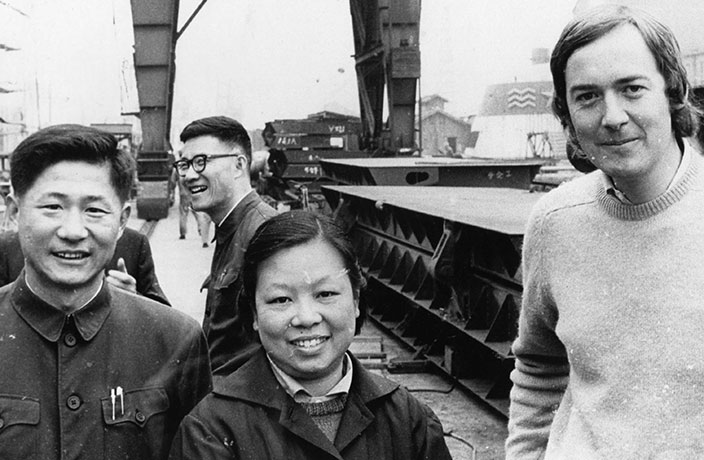Throwback Thursday is when we trawl through the That's archives for a work of dazzling genius written at some point in our past. We then republish it. On a Thursday.
By Marianna Cerini
Dresses, hair & makeup, venues, invitations, photo albums, receptions, rings, catering, music, limousines… tying the knot has never been easy. But things are officially getting a little out of control in China. As the wealthy get wealthier and old traditions are swapped for new, the meaning of the big day in the Middle Kingdom is changing, from the rise of Western-style weddings to the cost of saying ‘I do.’
“When I got married,” says 54-year-old Li Lanying, “people didn’t spend a lot of money on their ceremonies. I remember my wedding being a very simple, low-key occasion. My husband and I invited our relatives and friends to a local Shanghainese restaurant that was only RMB50 per table. I had my hair done at a local hairdresser for five kuai, and wore a light tan suit with a red silk shirt and a pair of red shoes.”
Oh, how times have changed.
Grand and glitzy, China’s modern wedding industry is roughly a decade and a half old. A business of US$57 million a year, the sector has seen unprecedented growth since the beginning of the 2000s, and the trend is only set to continue its upward trajectory. In a country where showing off is all part of social costume, weddings have become a way to display wealth and status like never before – whether that’s in a Vera Wang dress or a half a million kuai wedding venue.
"The uniqueness factor has certainly become a key aspect of today’s wedding industry."
While in times past, brides used to be carried in sedan chairs and the groom’s family consulted fortune-tellers to set the wedding date, today’s modern couples in their twenties and thirties (only-children who are the center of family attention) schedule their big day according to a hotel’s availability and opt for far more grandiose means of transports – think Rolls Royces, Lamborghinis and helicopters. Expectations have become higher, and so has the aspirations for the perfect experience.
Couples and parents are equal partners-in-crime. According to Ma Juli, sociologist at the University of Yunnan, “the baby boomers born in the 1950s had no chance to enjoy a ‘big wedding,’ both for economic and social reasons… Now, they are projecting their plans on their children, to fulfill the dreams they had no chance to realize.”
“Our wedding is costing us RMB200,000,” says Zou Yanchao, a young bride-to-be who is preparing to walk down the aisle this month. “It’s expensive, but my mum wants me to have a great wedding day. We took six months to organize it, from taking wedding photos to selecting an event agency and booking the hotel for the ceremony.”

Photo via Weddings by Ling
The latter, she adds, has been the most challenging part of it all. “Most couples book their venues at least one year in advance. As we started planning only half a year ago, it has taken us a long time to find a suitable place.” For her big day, she is going to wear a traditional qipao and a Western gown. A host emceeing the service – Chinese weddings have no religious component – and bridesmaids in modern-style frocks will complement a traditional tea ceremony and the hand-out of hongbaos to the newlyweds.
As an increasing number of moneyed couples spend time abroad and turn to the West for inspiration, it’s no surprise that modern middle-class Chinese weddings often present such dual character; an interplay of cultural elements rooted in China’s history - like the groom and his party meeting at the bride’s home on the wedding day to ‘obtain’ her or toasting elders during the banquet - and Western traits, from the wedding rings to the white gowns.
“Without a doubt, almost all brides in China want to walk down the aisle in their white wedding dress as in the West,” says Raul Vazquez, president of Weddings Beautiful China, over the phone from Beijing. “We are also seeing entertainment and after-parties on the rise, which has not been typically a Chinese tradition. That said, Chinese couples don’t forget their own customs.”
Weddings Beautiful China, a joint venture from the United States that specializes in training wedding planners across 200 countries, was set up in 2011 to bring American-style expertise to the country, where many young couples don’t quite know how to plan their nuptials. The firm works side by side with Weddings by Ling, itself an American-owned boutique founded by celebrity wedding planner Ling Ying that, according to their website, “caters to today’s modern, elegant and chic brides living in China.” Both companies are in high demand among über-loaded families looking for a bespoke I-do experience.
"Without a doubt, almost all brides in China want to walk down the aisle in their white wedding dress as in the West."
“The uniqueness factor has certainly become a key aspect of today’s wedding industry,” says Ling. “This means couples are getting more selective in how they choose to celebrate their wedding and are much more willing to fork out money for letterpress invitations, premium candies, elaborate decor, cutting edge audiovisuals and live entertainment.”
Indeed, a bit of ‘show-biz’ seems to be a common component to most ceremonies today, a means for parents to cement their status and display their affluence and for the bridal couple to experiment with ways to personalize their big day. “As more people have disposable income, they are looking for additional ways to make their special day even more memorable,” Ling continues. “Cookie-cutter weddings are being relegated to the past.”
The shift in purchasing behavior and the emergence of new trends have also driven a rise in destination weddings, a sector of the industry that, according to Vazquez, is set to pick up steam over the next few years. “Exotic locations like Bali, Fiji and the Maldives are welcoming more and more Chinese couples celebrating their nuptials. And an increasing number of international line cruisers are adding departure ports in China, offering cruise ship weddings to the local consumers.”

Photo via Weddings Beautiful China
To satisfy the demands of the booming industry, a slew of high-end vendors, photographers and caterers have sprung up across the country, followed by international marketers. In 2010, leading U.S. wedding website The Knot launched Ai Jie, a Chinese-language website offering inspiration and advice about weddings, relationships and household planning for couples in China. The site also provides interactive tools like a budget calculator, guest list manager and checklists.
Its content ranges from wedding dresses and cake photos to relationship tips and pregnancy advice, as well as a local vendor directory that, since launching, has drawn a plethora of advertisers - mostly hotels in honeymoon locations like Hawaii. With more than 10 million couples tying the knot every year, everyone seems to want their share of this highly-profitable wedding cake.
Things are only going to get bigger. As Professor Ma wrote in an essay on the evolution of marriage in China, “seeing a bridal couple have an elaborate ceremony entices their friends to follow their example, in an effort to match or surpass what their peers have done. It’s a circle of public appearances and pride.”
Trying to keep up with the Jones’ may just push the industry’s boundaries even further. As the middle class grows, the big day may soon become a blood sport in the battle for status – after all, the occasion is supposed to happen once in a lifetime. Why not do something really over the top?
Additional research by Karoline Kan and Tongfei Zhang. Top image by Liva Koziola.
This article first appeared in the October 2013 issue of That's Shanghai and That's Beijing. To see more Throwback Thursday posts, click here.






















0 User Comments